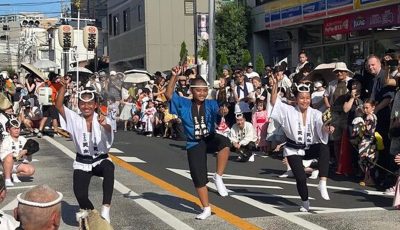Was report of Japanese suicides in WWII on Saipan really true?
Reports that Japanese soldiers and civilians committed mass suicides at the tail end of World War II on Saipan and Tinian to avoid capture have been greatly exaggerated, according to historian Haruko Taya Cook, one of the presenters at the history conference held Saturday at the Saipan World Resort.
This presentation may have been one of the most interesting and important presentations that could literally revise parts of World War II history in the Pacific as we know it.
Cook told the audience that what is referred to as the “Saipan gyokusai” which means “self-destruction,” may have been a myth.
Cook said that despite the horrible scenes of suicide and murder, fear and misery, desperation and despair that took place in 1944 at key historic sites on Saipan, the facts do not support the conclusion that all Japanese civilians and soldiers “preferred death to surrender.”
Cook said a vast majority of these Japanese nationals survived the Battles of Saipan and Tinian, only to be expunged from the war story by wartime propaganda on both sides of the conflict.
Cook’s research and study on this so-called “wartime myth” was based on interviews with Japanese survivors and the eyewitness account of one of the U.S. Marine Corps interpreters who experienced the battle from the other side and shared his unique perspective on the dangers the creation of the myth would have on the future course of the war against Japan.
According to Cook, the report of mass suicides by the Japanese military and civilians written by Robert Sherrod appeared on the Japanese press “more than a month” after the battle on Saipan. Cook’s research on Sherrod identified the journalist to be from Time magazine and his story appeared on Aug. 7, 1944.
Cook told Saipan Tribune said that some Japanese did kill themselves but majority survived.
“But after Saipan fell officially, in Japan everybody was dead and some were already captured and they were not allowed to survive. In Japan, the military rule was nobody was allowed to survive and they extended that to the civilians,” Cook said.
Cook also said that the Japanese government at that time knew that many surrendered to U.S. forces.
“But they never announced it, they reported officially that everybody was dead,” she said.
“They were killed by their own government, often called haji (shame) and that your family’s name will be tainted,” she added.
Cook told Saipan Tribune said that schoolteachers taught the children how to “die” if they were captured by Americans.
“Teachers told them that if they were captured, they will be raped if you’re a woman and then killed if you are a guy. You’ll be put under the truck or tanks,” Cook said.
Cook said that many eyewitnesses later said this was not true.
“Those who knew, who went back to Okinawa, told them that the Americans were not like that, but since they were ‘officially dead’ through the Japan government, they killed themselves through fear and was told to do so,” Cook said.
In her correspondence with retired Lt. Robert Sheeks of the U.S. Marine Corps, she learned that he had spoken with many Japanese civilians and soldiers hiding in the cliffs at the time.
According to Cook, Sheeks witnessed what happened in the war and that he wrote to the U.S government but it didn’t believe what had happened and his letter was censored.
Cook said that many had wanted to survive and only a few committed suicide, but there will always be that question lying around—Was it the war propaganda that hid the true nature of the so-called “Saipan gyokusai” or was it the Japanese government killing them off? Or is it all a myth and that the truth lies with the accounts of those long gone?



























